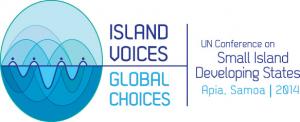Digicel Pacific and UNISDR Pacific Partnership: Strengthening Businesses Resiliency & Disaster Preparedness
UNISDR
#SDGAction39935
Description
UNISDR encourages businesses of all sizes to adopt and promote preventive measures against all hazards to contribute to business, community and national resiliency. When businesses understand the value of sound risk management and plan for hazards ahead of time, the ability to resume productivity quickly after hazardous events is apparent.Digicel Pacific is a best practice example for disaster preparedness and business resilience, not only for ensuring comprehensive disaster planning and preparation in their own operations, but for providing innovative products and services that reduce the impact of hazards. Digicel Pacific has proven a thorough understanding of preparedness measures and seeks to ensure that other businesses can benefit from their experience and services also.UNISDR has the data, research and technical expertise necessary to convince business owners of the need to invest in preventive measures to ensure businesses are resilient to disasters and natural hazards, which consequently contributes to the overall sustainability of SIDS.Digicel Pacific, as a model of comprehensive disaster preparedness planning within their own organization also offers a range of products and services to reduce the impact of hazards on other businesses operating in a SIDS. Digicel Pacific can provide a technological solution for businesses of all sizes to data loss during adverse events whether though flood, storm, fire or power outage.Through this joint collaboration, the Digicel Pacific/UNISDR partnership will continue to broaden the knowledge and awareness amongst businesses owners to understand the value of hazard reduction measures whilst presenting practical technological solutions to boost business resiliency to all hazards.
SDGS & Targets
Goal 9
Build resilient infrastructure, promote inclusive and sustainable industrialization and foster innovation
9.1
9.1.1
Proportion of the rural population who live within 2 km of an all-season road
9.1.2
Passenger and freight volumes, by mode of transport
9.2
Promote inclusive and sustainable industrialization and, by 2030, significantly raise industry’s share of employment and gross domestic product, in line with national circumstances, and double its share in least developed countries
9.2.1
Manufacturing value added as a proportion of GDP and per capita
9.2.2
Manufacturing employment as a proportion of total employment
9.3
9.3.1
Proportion of small-scale industries in total industry value added
9.3.2
Proportion of small-scale industries with a loan or line of credit
9.4
By 2030, upgrade infrastructure and retrofit industries to make them sustainable, with increased resource-use efficiency and greater adoption of clean and environmentally sound technologies and industrial processes, with all countries taking action in accordance with their respective capabilities
9.4.1
CO2 emission per unit of value added
9.5
9.5.1
Research and development expenditure as a proportion of GDP
9.5.2
Researchers (in full-time equivalent) per million inhabitants
9.a
9.a.1
Total official international support (official development assistance plus other official flows) to infrastructure
9.b
9.b.1
Proportion of medium and high-tech industry value added in total value added
9.c
Significantly increase access to information and communications technology and strive to provide universal and affordable access to the Internet in least developed countries by 2020
9.c.1
Proportion of population covered by a mobile network, by technology
SDG 14 targets covered
Deliverables & Timeline
Resources mobilized
Partnership Progress
| Title | Progress Status | Submitted |
|---|---|---|
| Partnership Progress 2016-08-08 | Completed |
Feedback
Action Network

Timeline
Entity
SDGs
Region
- Asia and Pacific
Countries
Contact Information
Meri Kelliher, UNISDR DRR Information Officer

